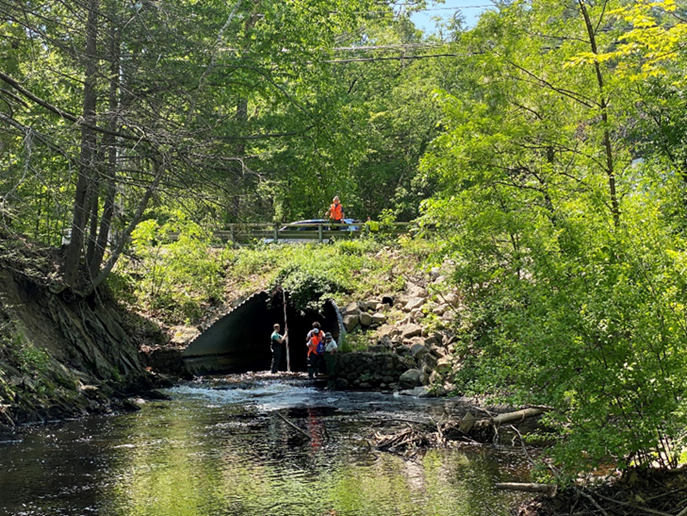New Hampshire Stream Crossing Replacement Prioritization
Primary tabs
The information contained in this article is not intended as legal advice and may no longer be accurate due to changes in the law. Consult NHMA's legal services or your municipal attorney.
Stream crossings (i.e. culverts and bridges) play a pivotal role in connecting human and wildlife communities, with roughly 20,000 structures dotting New Hampshire alone. Many of these crossings are aged or failed, exacerbating stream fragmentation and flooding risks, yet resources to manage these assets are often limited and scattered across stakeholders. Funded through the American Rescue Plan Act (ARPA) and in collaboration with New Hampshire Department of Environmental Services (NHDES) and the New Hampshire Stream Crossing Initiative (NHSCI), the University of New Hampshire (UNH) is pioneering the Stream Crossing Replacement Prioritization Project to develop a stakeholder-informed prioritization framework for stream crossing replacements that aims to identify win-win management scenarios that will balance road safety, ecosystem restoration, climate resiliency, aquatic organism passage, and cost. The project encompasses two components:
Stream Crossing Field Assessment
Over the summers of 2022 and 2023, UNH teams assessed over 4,000 stream crossings for geomorphic compatibility, hydraulic capacity and aquatic wildlife passage using standardized methods developed by the NHSCI. Thanks to this effort, all accessible stream crossings within the Merrimack River and Salmon Falls-Piscataqua River HUC 8 watersheds have been assessed, setting the stage for data-based decision making. Previous assessment efforts led by other entities have been limited by field personnel and supervisory capacity and typically only accomplish 100 to 300 assessments per year. The complete stream crossing dataset, which currently accounts for over 70% of New Hampshire’s stream crossings (and counting!), can be accessed through NHDES’ Aquatic Restoration Mapper.
 UNH students conducting a stream crossing assessment in 2023.
UNH students conducting a stream crossing assessment in 2023.
Stakeholder-informed Prioritization
Despite a robust stream crossing data set, New Hampshire lacks a uniform and comprehensive stream crossing replacement prioritization process. Conventional prioritization frameworks cannot address the diverse needs of different stakeholders and tend to inefficiently focus on individual stream crossing. However, by adopting a broader, watershed-scale prioritization approach, we can identify win-win solutions that would result in optimal ecological, economic, and societal outcomes and ultimately more benefits for all stakeholders compared to their traditional methods.
To ensure an inclusive and comprehensive prioritization framework, the second phase of this project engaged a diverse group of stakeholders at the local and state level through a survey to elicit their perspectives, priorities, and preferences. The result of this survey, which closed at the end of April, will inform the development of a stream crossing prioritization model and interactive planning tool utilizing the stream crossing assessment data. The project team has initiated analysis of the survey responses and anticipate sharing results at the end of the summer – stay tuned!
Please direct any questions to Polly Crocker, NDHES Watershed Management Specialist, (pauline.f.crocker@des.nh.gov) and/or Koorosh Asadifakhr, PhD student at the UNH College of Engineering, (koorosh.asadifakhr@unh.edu).
